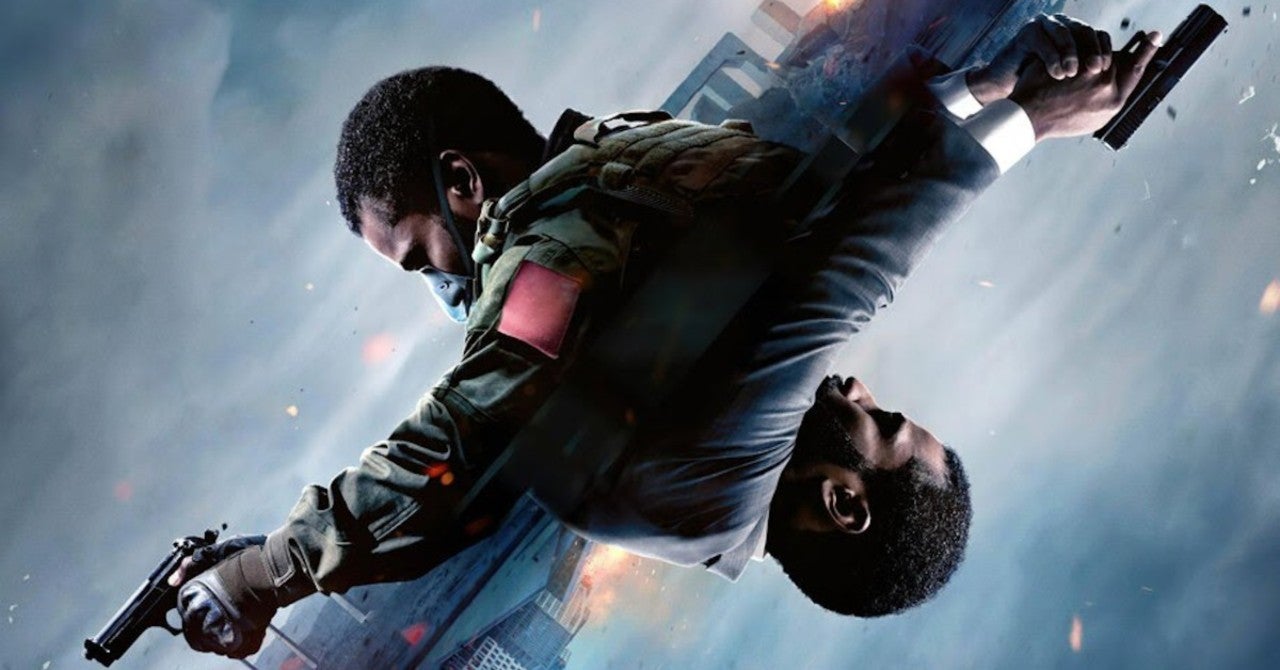Tenet (2020, Dir. Christopher Nolan):
“Don’t try to understand it. Feel it.” So a character says early on in Christopher Nolan’s latest mind-twisting thriller Tenet, and most critics have latched onto the line as a warning to the viewer. Nolan’s films might masquerade as clever think pieces, but they hit a chord because they’re populist (and popular) entertainment above all else, with feeling way more important than understanding. With all the dream logic gobbledygook that Inception (2010) laid on us, its best moments are purely cinematic: Paris folding back in on itself, or Joseph Gordon-Levitt tap-dancing his way down a hall in zero gravity. Interstellar (2014) messed with our heads using fourth-dimension quantum physics, but the film’s reason for being is spelled out when Matthew McConaughey breaks down at the sight of his daughter growing from a teen into an adult in the span of ten minutes.
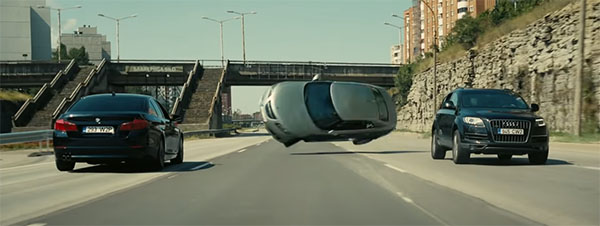
For all his intellectual pretensions, Nolan is one of the last purveyors of old-fashioned spectacle. (In Tenet, a scene of a 747 crashing into a hangar was filmed for real instead of using CGI—what’s more flamboyantly “old-fashioned” than that?) And yet, Nolan has never felt secure in his hold on the audience; fearing that no one will go with his gaga ideas unless they’re grounded in things like “story” and “logic,” he stuffs his movies with exposition and explanations, metaphysical musings and baldly stated themes. He’s a nerdy watchmaker who insists that we not only thrill to the sweep of the second hand, but also understand the individual working of every gear inside the casing. Not that mainstream audiences have minded; spoon-fed entertainment might be less adventurous than some would want, but at least no one is left behind.
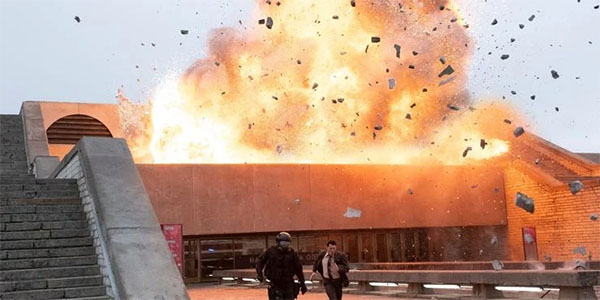
If Nolan’s Memento (2001) found its protagonist living without memory of the immediate past, and Inception and Dunkirk (2017) stretched and collapsed time, Tenet ping-pongs its protagonist (helpfully named “The Protagonist” in the credits) between past and future, to the point where he (and we) aren’t sure if he’s coming or going. It all starts innocently enough, as our nameless CIA hero (John David Washington) breaks up a terrorist takeover of a concert hall, then attempts, and fails, to extract a stolen item. But instead of dying when he ingests a cyanide pill, the Protagonist is revived by a mysterious group only known as Tenet. His mission: prevent Armageddon. (“Nuclear holocaust?” he asks. “No. Something worse,” he’s assured.) A scientist (Clémence Poésy) lays it out for him: certain objects are “inverted,” with the ability to travel backwards through time instead of forwards. Thus, a bullet springs from a target back into the chamber of the Protagonist’s gun, and crashed cars flip back upright and continue (start? rewind?) a chase. The Protagonist’s response to this, mirroring Keanu Reeves in The Matrix: “Whoa.”
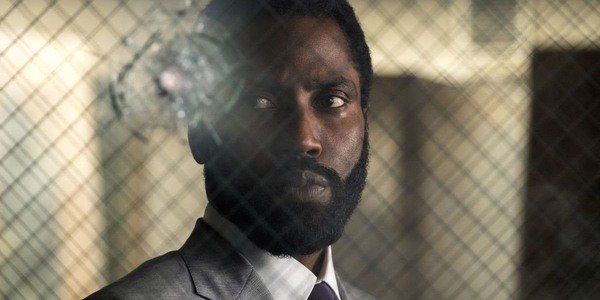
Assigned to track down unseen foes from the future who are invading the present, the Protagonist soon drafts some allies to his cause, including a pragmatic arms dealer (wry Dimple Kapadia) and Neil, a laid-back spy (Robert Pattinson, acting like a James Bond after an extra martini or two). Speaking of Bond, the trail leads to a Bond-like adversary—Russian oligarch Andrei Sator (Kenneth Branagh, snarling it up with a Borscht accent)—and his estranged wife Kat (Elizabeth Debicki). Cozying up to Kat to gain access to Sator, the Protagonist is soon thrown into a seemingly random set of adventures. The theft of a fake Goya painting is of paramount importance, until it isn’t, but at least it makes a good excuse for a set piece in which the Protagonist and Neil infiltrate a high-security vault in an Oslo airport. The search for other items of value leads to a highway heist near Tallinn, and finally to a full-on battle of armies in an abandoned, “closed” Russian city jam-packed with brutalist architecture. As the movie’s title implies, Tenet is palindromic in structure, with the story doubling back on itself, and the end taking us back to the beginning. This is one film where the tail truly chases the head.
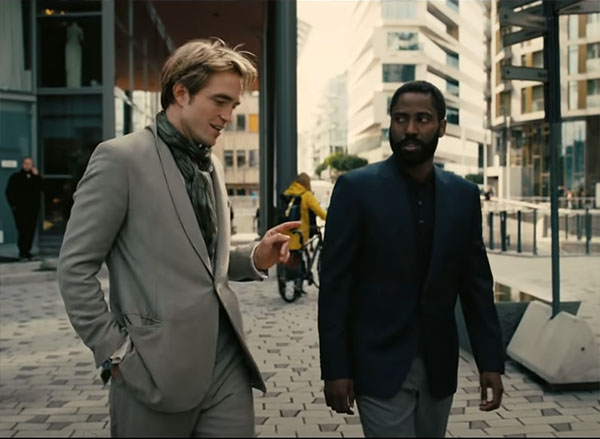
While Tenet presents itself as a puzzle box (just read about its use of the Sator square, which is interesting if not necessarily illuminating), its twisted-pretzel syntax isn’t too complicated once one gets acclimated to the rules of the film’s peculiar game. As usual, Nolan dangles mysteries before our eyes: Who is the masked intruder at the airport? Who’s the mysterious woman Kat sees diving off her husband’s yacht? This time, though, the answers are easy to guess. Without the element of true surprise, we’re left to play “spot the influence,” picking out movies and shows the film liberally steals from: The Night Manager, Jack Ryan: Shadow Recruit, Licence to Kill and The Thomas Crown Affair, to name a few. (Branagh’s hammy villain is a replica of his Russian evildoer in Jack Ryan, while Debicki basically repeats her role from The Night Manager, right down to an innocent son she must protect.) If Inception was Nolan’s take on caper movies, then Tenet is his spy film pastiche, with the emphasis on beautiful, impeccably-dressed actors, luxe speedboats and yachts, and purloined McGuffins.

So if Tenet lacks the coiled surprises of Nolan’s previous movies, and its genre tropes are déjà vu all over again, the prime question becomes: is the spectacle, the feeling if you will, worth the price of admission? The answer is mixed. Editor Jennifer Lame moves the film along briskly, especially during the opening action scene at the opera (which is as fleet as a Nolan film gets), while a nifty bungee-assisted infiltration of a Mumbai high-rise is like a giant slingshot game, with people in place of rocks. The film’s trump card is the “temporal pincer moment,” a stratagem in which past and future versions of people speed towards each other and meet in the middle, and the best sequences visualize this phenomenon, as endless explication gives way to out-and-out nuttiness. A confrontation between Sator and the Protagonist that spools out simultaneously in forward and reverse equals the surrealism of a David Lynch film, and an earlier car chase and fistfight are repeated from the inverted point of view, the effect akin to an impossible jigsaw clicking into place. Otherwise, Tenet‘s main pleasures lie in momentary non-sequiturs. A puddle un-splatters and reassumes its pristine original shape as the Protagonist steps into (away from?) it. A building explodes, re-forms, and explodes again, easy as a kid’s science project. A car catches on fire, and then ices up (everything in reverse, don’t you know). Remove the gimmicky time elements and Tenet isn’t all that remarkable, but it’s never less than watchable, thanks to Hoyte Van Hoytema’s crisp cinematography and Ludwig Göransson’s soundtrack, which alternates Arvo Pärt-style threnodies with thudding dub beats and dissonant synth scratches.
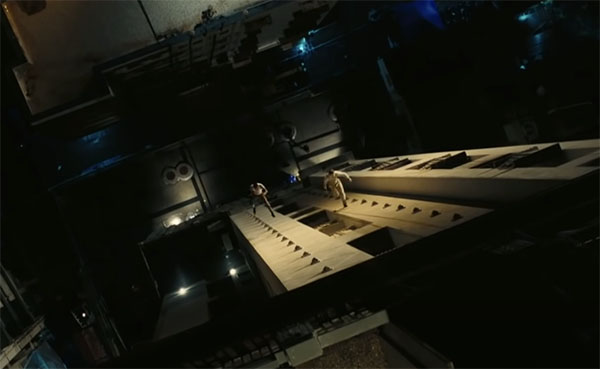
But as is his custom, Nolan just can’t leave well enough alone. Dunkirk found him deploying his usual chronological and narrative tricks, but for once he didn’t feel the need to explain his flourishes away, and the film was all the better for it. Tenet finds him back on familiar terms with the audience, laboring to explain what’s happening at every turn. (Dimple Kapadia’s character might as well be called “Brenda Exposition.”) In the process, intriguing notions are proposed, pondered, and then shrugged off. Ostensibly, the villains of the piece are aiming to eradicate their past (our present) to save the future, a very fitting conceit for our current day and age—who wouldn’t go back in time even just eight months to prevent all the shit that’s happened since then? But rather than sink into the juicy moral complications or heighten the stakes, the film prefers to wrap itself around highfalutin time paradoxes. “What’s happened’s happened,” Neil explains on more than one occasion.

Protagonist: But can we change things if we do it differently?
Neil: What’s happened’s happened. It’s just an expression of faith in the mechanics of the world.
Protagonist: Faith?
Neil: Call it what you want.
Protagonist: What do you call it?
Neil: Reality.
Chock full of ideas and incidents yet curiously lacking in true excitement, Tenet ultimately becomes a reflexive commentary on filmmaking itself, and how easy (or difficult) it can be to wind scenes backwards and forwards. Heady concepts are physicalized in ham-fisted ways: characters go backwards and forwards in time through a “turnstile” that is basically a magic box, and an “algorithm” that will determine the fate of the world is boiled down to nine puzzle pieces that must be joined together. Yes, everything hinges on video game fetch-quest mechanics, and everything else, including the characters—Washington’s polished operator, Branagh’s evil-as-evil-does baddie, Debicki’s damsel in distress—are mere elements in the code. The few details Nolan does reveal about his characters, such as Sator’s obsession with his Fitbit, or the Protagonist’s preference for Diet Coke, seem more like strange nods to product placement than actual signs of personality. The often-obscure dialogue (frequently muffled by soundtrack rumbles, oxygen masks and explosions) doesn’t help. “The implications of this are…” says Neil. “Beyond secret,” confirms the Protagonist. Most of the movie is in the same mode, veiled for the sake of being veiled, too focused on enigmas to get the audience revved up about anything else.
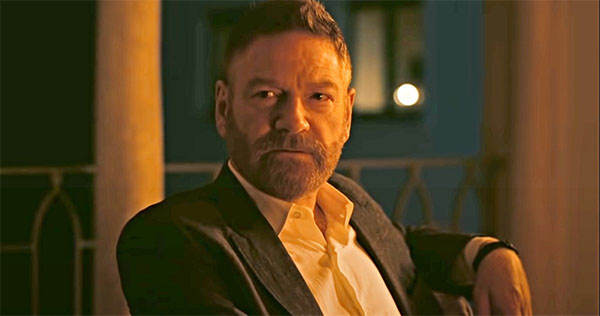
And yet, the real tragedy of Tenet is that while the film comes up short on supplying the cinematic “feeling” of Nolan’s other movies, you sense him laboring to attain actual feeling every so often, like an android struggling to emulate human emotions. Debicki’s tightly-wound Kat is meant to be the beating heart at Tenet‘s center, but Nolan seems uninterested or incapable of generating any chemistry with her and Washington—a particular shame given the latter’s affable presence. The film’s only hint of humanity is reserved for the bromance between Neil and the Protagonist; the closest it gets to poignance comes when the fate of Pattinson’s character is revealed (anyone familiar with the timey-wimey hijinks of Dr. Who or even a B-grade time travel thriller like Netflix’s In the Shadow of the Moon may guess how things go), but even then, the revelation comes off as a clever answer to a riddle rather than a moment of existential catharsis.

By the time Tenet‘s dueling-armies climax rolls in, Nolan falls back on CGI-generated sturm and drang, as explosions implode into themselves, color-coded soldiers sprint backwards, and preserving the universe depends on grabbing a doohickey before it’s buried in the ground. The denouement should be a moment of triumph, as the Protagonist realizes that he is indeed the protagonist of his own story, but as written and played, it has all the thrills of a precision watch getting wound up. Still, one moment does stands out from the temporal flim-flammery: the sight of a woman diving off a yacht, an image that is seen twice from different viewpoints, opening and closing a narrative circle. In intent and impact, the moment(s) attempt to capture the vibe of Chris Marker’s La Jetée, a jewel of a sci-fi movie that elegantly marries plot twists, dizzying time traveling conundrums and genuine pathos in a tidy 28 minutes. One could argue that Nolan has been searching for a moment of similar power his entire career; you won’t find it in Tenet‘s 150 minutes. The movie is Nolan unfettered and unfiltered, a towering monument to ambitious filmmaking and narrative intricacy. “See you in the beginning,” says Neil; Tenet preoccupies itself with constructing a finicky puzzle box of beginnings and endings, minus even the illusion of emotional involvement. You can admire the film, as long as you don’t mind the nothingness at its core. ■

